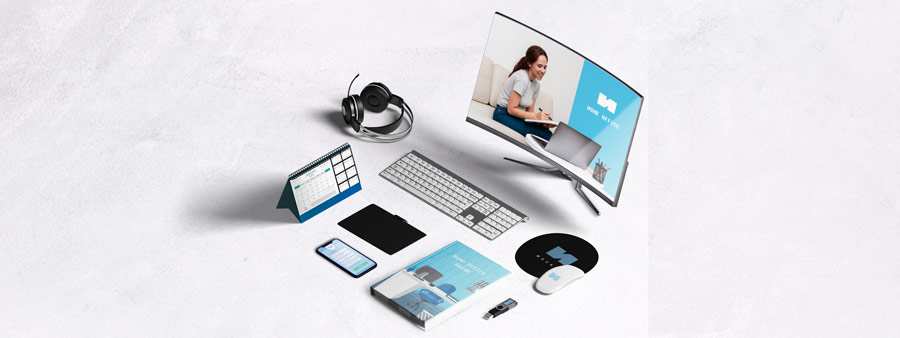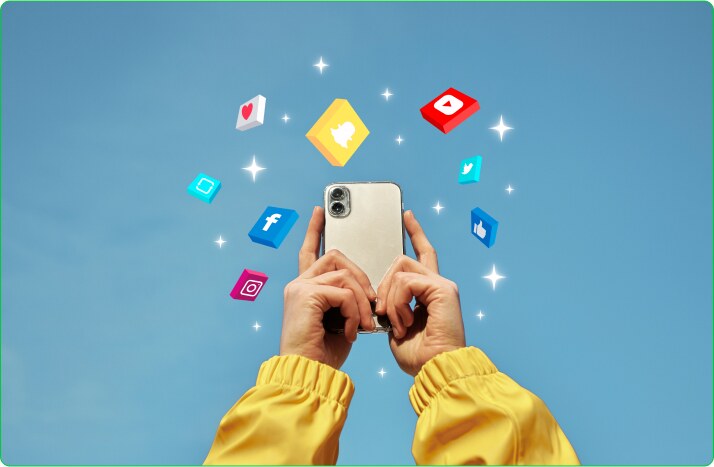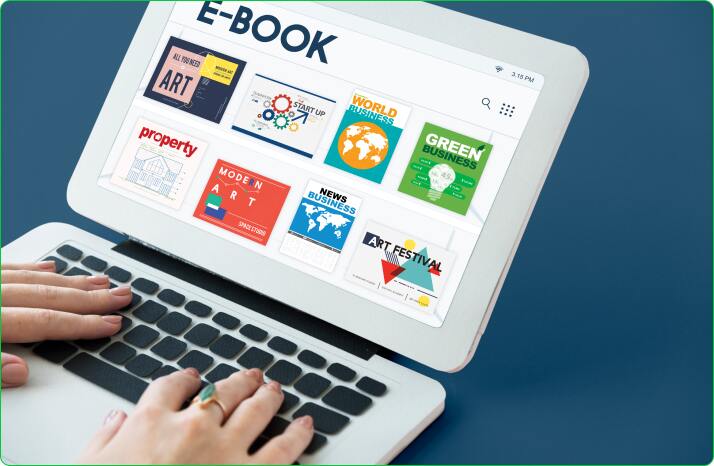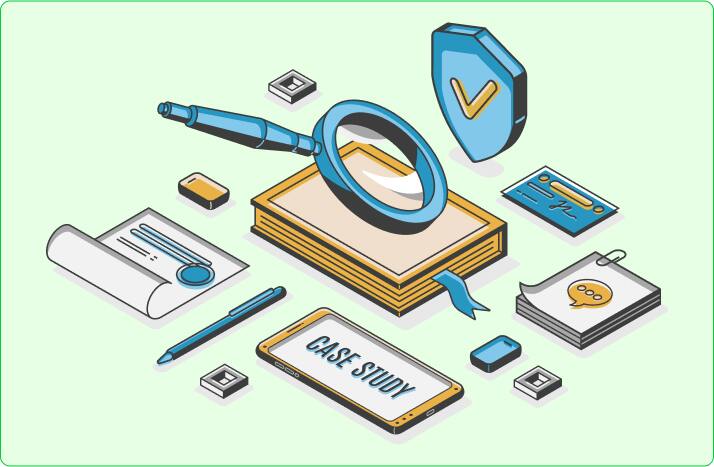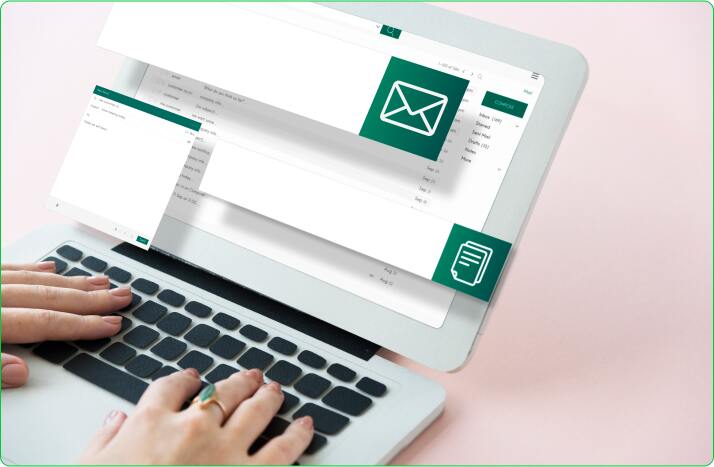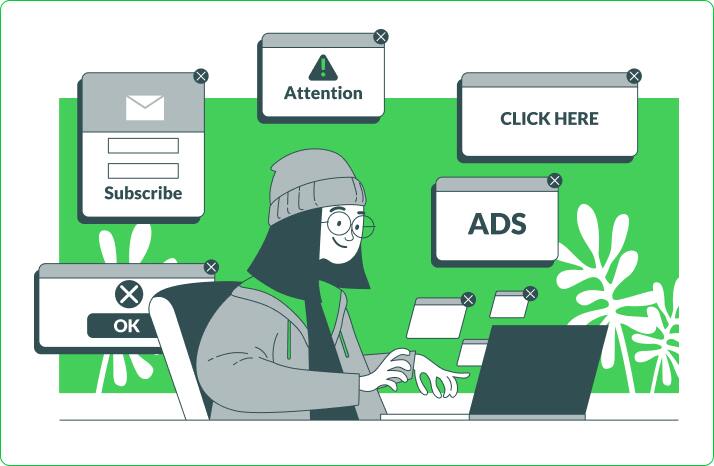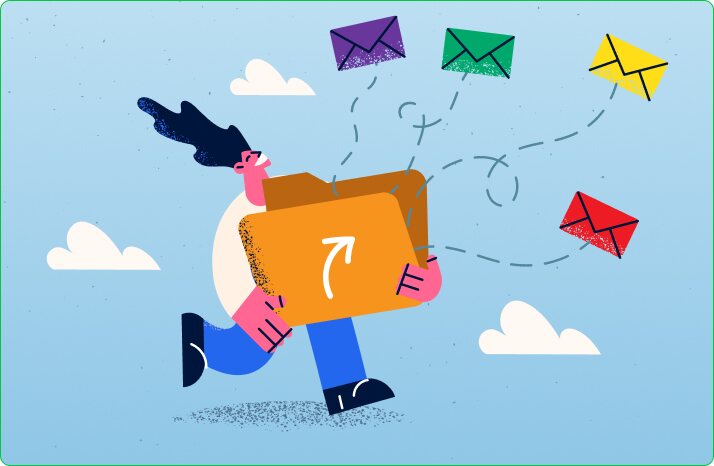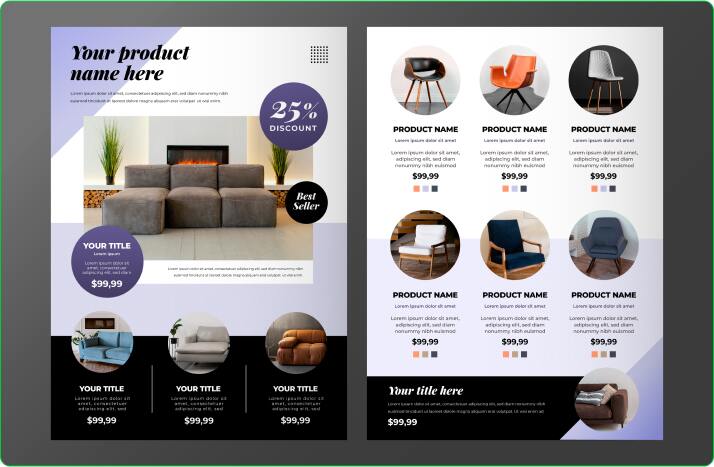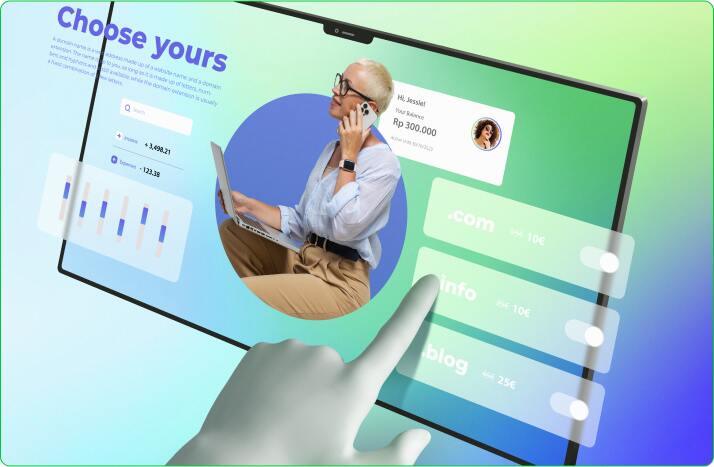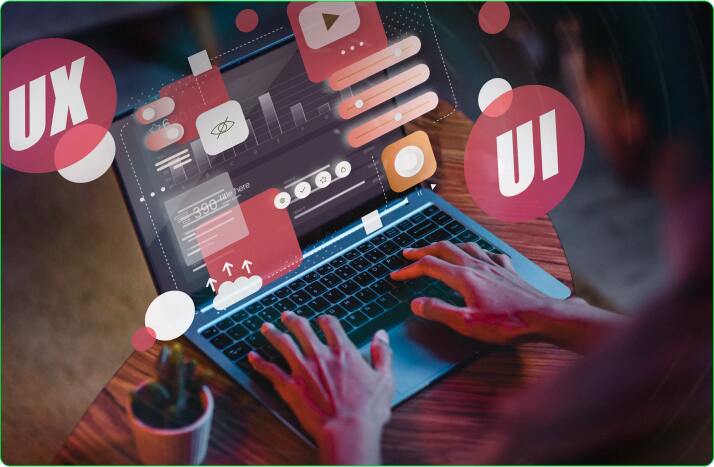One of the biggest challenges for businesses nowadays is creating marketing campaigns that stand out across different channels. This is because today’s highly competitive market simply won’t allow a great product to grab all the attention by itself.
And while attracting new customers is crucial, for a greater reach, you’ve also got to squeeze as much value as you can from the marketing collateral pieces you’ve already made. After all, constantly coming up with new stuff can cost a bundle real quick.
That’s why they say that leveraging various types of marketing collateral is both a skill and a process.
The skill is in crafting each piece to resonate with your audience and fit with your overall brand image. However, the process is in strategically distributing the right collateral to the appropriate audience at each stage of the buyer’s journey.
So what sort of collateral marketing do you have to work with? And how can you optimize each to not just attract new people, but also keep current customers more engaged?
Let’s answer these by walking you through 20+ common collateral pieces and how you can smartly work them into your integrated marketing campaigns.
What is Marketing Collateral?
Marketing collateral is basically any material you use to promote your company and what you offer. This covers everything from print stuff like posters and flyers to digital content like online catalogs and e-magazines. Just about anything you can use to get your brand’s message out there counts as collateral.
In the past, companies leaned heavily on printed materials for promotion. But those traditional methods where you had to directly interact with customers aren’t the only option nowadays. Thanks to the internet, brands can reach way more people than ever before without just relying on face-to-face stuff.
Moving more towards digital has opened up tons of opportunities for creating collateral online to promote products and services. Now you can send personalized emails, as gateways to your entire content library, to as many folks as you want.
Because of the internet, pretty much anything you see on the internet counts as collateral these days – like e-mags, white papers, blog posts, or annual reports. It’s crazy how much more you can do digitally versus just printing stuff out.
The Main Purpose of Marketing Collateral
The various marketing materials you create have different purposes based on your target audience. But together they aim to support your marketing and sales overall.
If people are just starting to realize the problems you can solve, collateral that raises awareness of your company works well. Or if they know who you are but aren’t sure yet about using what you offer, content that helps qualify them as leads makes sense.
Most digital content includes a next step, whether that’s a simple request to check out your website or a more specific one like reading a blog post. No matter what though, the goal is for everything to guide potential buyers through each stage of considering a purchase.
Whether it’s helping them understand options early on or providing enough info at the end for a decision, the materials need to smoothly walk people from initial interest all the way through to becoming paying customers.
It’s about shepherding each person along the full path from first learning about you to finally buying what you sell. When done right, the various pieces you produce will work together to do that guiding.
Mapping Collateral Marketing to the Buyer’s Journey
When creating marketing collaterals for your company, it’s important to think about guiding potential customers through the different stages of becoming buyers. Generally, people go through four main phases, whereas the fifth tags along when things click as you planned:
- Awareness: First, people need to learn that your business even exists.
- Consideration: Then they start thinking about whether or not your products or services could work for their needs.
- Decision: Eventually a choice gets made about whether to move forward with your offer.
- Loyalty: After a sale, keeping customers happy and coming back is key. Sending more info helps strengthen those relationships.
- Advocacy: This is the final phase, where happy customers become valuable promoters of your brand, sharing their positive experiences with others and often influencing new buyers.
It’s helpful to have these stages in mind when designing marketing collateral. Since needs change as people progress, content should evolve too.
For example, it doesn’t make any sense to hand someone who’s just learned about your brand a highly detailed technical white paper. That type of collateral is better off in the hands of someone who is assessing the finer details between alternate products or services during the Consideration or Decision stage.
When mapping out your strategy, you need to ask yourself “What stage is this specific person at now?” The goal is to guide each person from awareness to loyalty through targeted communications.
21 Types of Marketing Collateral with Examples and Best Practices
These days, marketing isn’t just about print anymore. We’ve got all kinds of digital options to choose from now for getting our message out there. Going digital means you have the opportunity to track interactions and get instant feedback, which is something traditional print collateral usually can’t provide.
To kick things off, here are some of the most prevalent types of marketing collateral used today and how you can effectively incorporate them into your marketing strategy.
1. Social Media Presence
- Type: Digital Marketing Collateral
- Stage: Awareness and Consideration
Having polished and professional social media profiles is out-and-out indispensable for any modern business. After all, a strong social media presence allows you to connect with current and potential customers, answer questions, and share timely updates about your business.
At a minimum, you’ll want profiles on Facebook, Twitter, Instagram and LinkedIn. Choose a consistent brand image, logo, and banner across all profiles to unite your visual identity.
Engaging, enlightening, and entertaining your audience is key.
For example, the outdoor gear company REI posts nice scenic shots from hiking trails along with gear reviews and tips on Instagram. Their account there alone has over 2.3 million highly engaged followers.
It’s the quality content that helps in constructing a robust online community that not only looks out for new posts from REI but also trusts the recommendations and information provided. This builds brand loyalty and can drive sales even without hard-sell tactics.
2. Brand Colors and Design Elements
- Type: Visual Identity
- Stage: All Stages
Brand colors and design elements are key to a company’s visual identity. A consistent color scheme and design motifs throughout marketing materials, packaging, and online presence can help establish brand recognition.
A visual style that shows what the brand is about will connect more with the target audience and can boost loyalty.
Think about how Coca-Cola has used its signature red everywhere to strongly connect it to the brand in people’s minds. Similarly, Apple’s clean, simple designs are so iconic that people immediately associate it with ease of use and new tech. Consistency like that really pays off in leaving an impression.
3. Blogs
- Type: Digital Media
- Stage: Awareness and Consideration
Blogging can be another headway to help your business and connect with people. Posts that are informative and useful will improve your search engine optimization and naturally bring more visitors to your site. It also shows people what you know about your industry.
If you post blogs regularly on relevant topics, it keeps those who are interested updated on what you’re about. Just make sure each one is well-researched, written clearly, and fits the tone of your brand.
But remember – balancing informational content with promotional messages without being too pushy is essential.
Think of how HubSpot uses blogs. By covering inbound marketing, sales, customer service, and more they’ve created a big assortment of material for readers. They share info while also promoting what they provide.
Not only do HubSpot’s blogs attract an audience, but they help turn site visitors into sales leads. The blogs link to private content like reports and ebooks that people get in exchange for contact details. Making them useful for both traffic and conversions.
4. E-Books
- Type: Digital Downloads
- Stage: Consideration and Decision
E-books are basically digital guides that give an in-depth look at topics related to running a business. They show people what you know and help build trust with readers. E-books work well as “gated content”, where folks get access by giving you their contact info – this helps generate leads.
Clear value proposition, rich content, comprehensive examples, and actionable takeaways are what make an e-book effective in moving someone through the buying cycle.
To launch an e-book successfully, you want to promote it across all your platforms with quotes and graphics that pique interest. And don’t forget to include calls to action within the pages so people know what you want them to do next.
For example, HubSpot offers different free e-books covering various aspects of digital marketing. These resources teach users while also subtly showing off HubSpot’s tools.
Just make sure the e-book doesn’t come across as one big advertisement. The goal is to establish yourself as the expert in your field, not hard-sell products. Unique insights that can’t be found anywhere else will encourage readers to exchange contact details.
5. ChatBots
- Type: Interactive Content
- Stage: Awareness, Consideration, Decision
Chatbots provide instant communication for users visiting your site. Automated responses can guide folks through a website, answer basic questions, and transfer them to a human if needed. They’re getting smarter all the time and can even do transactions or schedule appointments.
Offering immediate interaction, chatbots help keep visitors engaged on the site and can significantly improve customer service by being there 24/7. This automation also takes the workload off staff by handling routine queries.
You’ll want to check out how Commercial Bank of Kuwait used REVE Chat’s interactive co-browsing and video chat solution to offer real-time assistance to customers.
The chatbot was able to answer many common questions instantly, which helped customers navigate complex processes and issues on their own.
This level of immediate, around-the-clock support really streamlined the banking experience. Customers no longer had to wait for calls to be answered during business hours or visit a branch in person. No wonder it got them the top spot in the European Business Review.
What makes these bots more attractive is their scalability and ability to learn from interactions over time. This is because they help companies gain insights from bot data to address common user issues and help future content creation and product development.
For instance, Insurtech firm Lemonade’s friendly bot “AI Jim” even set a world record for the fastest handled claim, showing how powerful this technology is.
6. Case Studies
- Type: Digital/Print Media
- Stage: Consideration and Decision
Case studies tell stories about how your products helped real customers. It’s important because it gives proof your company can solve problems, which gets unsure buyers thinking they could see results too.
Focus on measurable wins like saving time or money. Numbers show you really delivered. This reassures people you’ll help them succeed as well.
When writing case studies, share the customer’s journey from start to finish. Include direct quotes so it’s authentic. Make stories relatable so readers picture themselves in the shoes of that customer.
Videos, infographics, or even interactive web pages can bring your case studies to life.
After all, it’s not just about having a PDF to download; it’s about engaging the audience and letting them visualize the success story. For instance, customer testimonials in video format can be extremely potent, as they offer a more personal touch.
As many would agree, Salesforce excels with its collection of case studies, offering a broad range of industries and problems tackled, providing evidence of the platform’s versatility and impact.
7. Webinars
- Type: Digital Content
- Stage: Consideration and Decision
Webinars are an excellent way to directly engage with your audience in real-time. Doing a live online event allows you to show off what you know, answer questions from folks watching, and interact with them one-on-one. Doing it live adds a personal element that other digital stuff often lacks.
Plus, after it’s over you can offer the recording as gated content to people who provide their contact info or simply put it publicly online. That way the presentation keeps generating leads even after.
It’s crucial to provide a mix of educational content, live demonstrations, and Q&A sessions in your webinars to keep the audience engaged.
You can throw in some giveaways or special deals here and there to keep interest up and reward people watching. Besides, you can use polling and surveys to get honest feedback and make it more interactive.
Webinars should tie into your overall online strategy. After all, promoting them in emails and sharing highlights on social media can maximize your brand’s reach exponentially.
For example, Adobe does webinars all the time on design and digital marketing. They not only teach people but also showcase how their software can be used. This helps cement their image as industry leaders.
8. Email Newsletters
- Type: Digital Correspondence
- Stage: Awareness, Consideration, Decision, and Loyalty
Email newsletters are a basic part of digital marketing. You can use them to keep customers aware of new stuff like industry news, tips, trends, and promotions. Having a direct path to people’s inboxes means they can really work well if the content is something folks find useful.
Personalization is key in email newsletters.
It always pays off when you address people by name and make sure what you’re sharing fits what they’re interested in or have looked at before. Meanwhile, segmenting your list allows tailoring content better for different types of subscribers.
How often you send should depend on what your audience wants and how relevant your content stays over time.
Some companies have really nailed email newsletters down to an art – like Mailchimp consistently provides newsletters their people love getting. They prove newsletters can keep customers excited to hear from you regularly if done right.
9. Online Ads
- Type: Digital Marketing Collateral
- Stage: Awareness, Consideration, Conversion
Online ads come in many forms from banner ads to sponsored social media posts, and they are highly targeted based on interests and behaviors. Digital advertising allows measuring effectiveness through click-through and conversion rates to optimize campaigns.
Sophisticated algorithms enable cost-effective opportunities through real-time bidding for ad space.
Online ads can also complement content marketing by driving traffic to quality articles for your audience. Different ad types like PPC, display, and video reach various parts of the buyer’s journey.
If you have an e-commerce site, retargeting ads can remind visitors who didn’t buy of products they viewed, potentially completing sales. This tailors the experience for each user, making it more likely to convert browsers into buyers.
Platforms like Google and Facebook Ads offer extensive targeting options on demographics and interests so spending goes right to relevant audiences. And if you continuously do A/B testing on your ads, it can help identify what resonates best with your audience, allowing a more effective strategy.
10. Direct Mail
- Type: Physical Correspondence
- Stage: Consideration, Decision, and Loyalty
Even with everything online these days, direct mail still has its place in marketing. Getting actual physical mail feels more personal and can break through all the digital clutter better. It works great for targeted campaigns where digital response may be lacking.
You can use recipient segmentation and personalization to enhance the impact of your direct mail campaign.
Tailoring the message to each receiver, whether with customized promo items or handwritten notes, increases how valuable and relevant the mailing seems. And integrating it with digital efforts using QR codes or tracking links can further provide a smooth online experience.
Take an example from Starbucks, which periodically sends out personalized direct mail offers to loyal customers based on their past purchase history.
By including a customized offer tailored just for the recipient, like buy-one-get-one for their favorite drink, Starbucks is able to drive higher response rates and in-store visits through direct mail that feel more meaningful than generic digital ads.
It can also be used effectively to re-engage lapsed customers or those who haven’t interacted with your brand online in a while. Often, this physical touchpoint can reignite interest and bring them back into the customer journey.
11. Product Catalogs
- Type: Print and Digital Media
- Stage: Awareness, Consideration, Decision, and Loyalty
Product catalogs, whether in print or online, give customers a detailed look at the range of products or services a company offers. It isn’t just about listing items; it’s about presenting them in a style that fits your brand and tells a story.
High-quality images, effective copywriting, and a smart layout all contribute to a successful catalog.
Catalogs can guide potential customers through best sellers and new stuff, so customers find things they maybe didn’t know about before. Pairing products with lifestyle images and descriptive text helps people visualize using that stuff in their own lives. And that connection can lead to sales.
Likewise, reviews and ratings from other customers can provide valuable social proof. This can have an immense impact since people usually feel better about quality if they see what others think. Also, making print versions available in stores or by mail adds to easy access.
Companies like IKEA are known for their huge catalogs. They show not just furniture but inspiration for home design too. They make an impact by creating an experience even before a purchase is made, something that translates to their digital catalog as well.
12. Brand Magazines
- Type: Print and Digital Media
- Stage: Awareness, Consideration, Loyalty, and Advocacy
Brand magazines are unique in that they often blend lifestyle content with product and company information. They have the potential to become a valuable source of industry news, along with stories folks want to check out. Including customer experiences can also foster a sense of community around the brand.
Creating a strong editorial voice helps these magazines resonate with readers.
For example, the REI Co-op Journal talks about outdoor activities just like the gear they sell. By focusing on stories and practical tips, REI shows they know outdoor stuff and aren’t just about making sales. This establishes them as the experts in that outdoor lifestyle space.
Similarly, Airbnb’s magazine provides travel insights and local secrets that get readers to explore new places and cultures. It’s a nice way to remind customers what they do – unique places to stay while traveling. The compelling stories and photos also make trips seem more enriching.
13. Awards, Reviews, and Testimonials
- Type: User-Generated Content (UGC)
- Stage: Decision and Loyalty
Showcasing awards and recognition shows customers you really care about doing things right. User reviews and feedback from customers can also have a big influence on purchase decisions by telling people’s real experiences with products and services.
Combining these accolades with customer stories can spread positive word-of-mouth.
Highlighting actual success stories in case studies demonstrates how your offerings solve problems customers have. It adds depth to the value people see. Plus showing off awards on your website and social media lets potential customers know right away that you’re trustworthy.
Look at electronics giants like Sony – they always tout all the awards and honors they get in their marketing.
14. Landing Pages
- Type: Digital Media
- Stage: Awareness, Consideration, Decision
Landing pages are special web pages made specifically for marketing. They’re meant to get people to do something, like sign up for emails, download an ebook, or make a purchase. They focus just on what’s needed to get people interested enough to take that next step.
Successful landing pages often include unique selling points (USPs), clear calls-to-action (CTAs), and possibly a form to capture details.
Conversion rates are bound to go up when you tailor these pages to what folks are into and what you’re marketing. This is because it gives people a straight path and makes the whole signing-up process easier.
That’s why top companies always focus on testing and tweaking their pages based on feedback and stats. For example, Netflix reworks its pages a lot to hook different audiences by highlighting new shows or features. Besides, they’ve kept the navigation distraction-free so people just focus on signing up.
Effective landing pages also manage to balance creativity with functionality.
So, if you can make sure that your pages work well on phones and tablets, that can be a huge plus. After all, over 90% of total web traffic now comes from mobile devices. Plus, integrating landing pages with retargeting strategies can remind folks what they looked at and boost the chances of them coming back to sign up.
15. Infographics
- Type: Visual Content
- Stage: Awareness and Consideration
Infographics can distill complex information into a format that is easily digestible and visually appealing. They’re excellent for simplifying and presenting data trends, statistics, or processes.
They’re particularly successful when they tell a story or insightfully connect bits of information.
Educational infographics that teach something can spread like wildfire online, basically becoming references on their own. For example, one about healthy eating could interest both people focused on themselves and teachers looking for visual aids.
When made really well, infographics can make a brand look knowledgeable in what they do. By using both attractive designs and useful content, companies can communicate effectively while engaging people.
Also, when infographics get shared on social media, they can totally blow up, giving the brand more exposure without spending extra money.
Check out how the World Health Organization uses infographics to clearly show complex global health data. Their ability to simplify and accurately portray numbers plays a key role when raising awareness among people.
16. Common Objection FAQs
- Type: Educational Content
- Stage: Consideration, Decision, Advocacy
Talking through common worries or objections customers might have can get ahead of problems and help more people buy in. Having a dedicated FAQs section where you thoughtfully lay out answers shows you know what challenges folks face and are proactive with solutions.
Not only do FAQs improve the user experience, but they also provide a chance to boost your business’ search rankings (SEO).
If you can incorporate relevant keywords into your answers strategically, you can help your site come up higher in search results for those queries.
Some top companies go even further by creating interactive FAQ sections that let users filter by popularity or category, customizing it to their needs. For example, Apple has huge support pages that not only address regular questions but also guide users through troubleshooting, often avoiding the need for a service call.
17. Video Tutorials and Onboarding Guides
- Type: Educational Content
- Stage: Consideration, Decision, Loyalty, and Advocacy
Video tutorials take FAQs up a notch by showing instead of just saying. People can follow along and actually see the solution in action, which is super helpful for complex tasks or when new users are getting familiar with a product.
Seeing concepts and details visually through videos can massively increase how well folks remember things a ton.
Whether it’s intro videos for new customers or in-depth how-tos for existing ones, video allows for great storytelling and deep explanations in a format that can be paused and revisited as needed.
If you check out web-developing platform Webflow’s Academy website, you’ll find a huge library of step-by-step video tutorials that guide you through site creation. Not only do these resources add value, but they also help build trust with potential users who can see what the platform can do before investing.
Companies like Adobe and Salesforce also offer video tutorials to demonstrate product use, which cuts down the learning curve for new users. By hosting these vids on their own channels or embedding them on product pages, they make sure users can easily access guidance.
Then, throw in customization, like letting users select their exact problem areas, and you’ve got a recipe for high user engagement and satisfaction.
18. Listings and Directories
- Type: Organizational Content
- Stage: Awareness
Listings and directories categorize info to help users find what they need fast. By having a well-set-up directory, organizations can boost how easy they are to find and help search rankings.
These directories can also provide valuable backlinks to improve your site’s credibility.
A directory might show industry-related businesses, services, or professionals. They’re not just helpful for users but also profitable for the businesses listed. Being included in reputable directories can lead to more traffic and potential customers.
For example, a local business directory for a city makes it simple for people to find services and helps businesses get more local visibility. Professionals can also use listings for networking and connecting with leaders or possible partners in their field.
Plus, many directories now include ratings and reviews, letting users share experiences and helping others make informed choices. Sites like Yelp have a huge community around user reviews, hugely affecting customer behavior.
19. Interactive Calculators and Tools
- Type: Interactive Content
- Stage: Awareness, Consideration, Decision
Things like cost calculators and ROI calculators can really engage site visitors while also providing them with useful info. These tools let people customize the numbers to fit their situation, so the data is more applicable and helpful as they decide what to do.
These calculators also encourage users to interact with your website longer, which can signal to search engines that your content is valuable and deserves a higher ranking.
Plus, users get invested in the results they get, building a stronger connection to your brand.
For example, the HubSpot ROI calculator helps businesses figure out potential returns from marketing campaigns. Likewise, mortgage calculators on real estate sites assist home shoppers in estimating monthly payments.
Throwing tools like that onto your site not only benefits the visitor but could also generate quality leads. It adds value while they’re there and gives them a reason to stick around longer.
20. Brochures and Flyers
- Type: Print Content
- Stage: Awareness, Consideration
Brochures and flyers can still be an important part of marketing, especially for local events, services, and new product launches. They are something physical that customers can take with them, which serves as a visual and verbal reminder of what you offer.
Handing out well-designed brochures at events or in your store can really leave an impression and stick in people’s minds more than a digital ad.
Whether it’s a tri-fold brochure or a nice glossy flyer, each has the potential to grab people’s interest and tell them about features, deals, and special offers. Professionally made printed materials like brochures also show customers how professional your brand is, and that matters when building trust.
As we said before, you can also include QR codes on prints to direct people to your website or a specific product page for more details or purchases. It blends offline and online marketing smoothly.
Even though the world is moving more digital, printed stuff like brochures and flyers can physically encourage potential clients to check out a new store nearby. Attend a local event they may have missed, or take advantage of a limited-time discount.
In high foot traffic areas, an eye-catching flyer can successfully turn passersby into customers. Also, distributing flyers in the right spots can help smaller and medium businesses reach more locals without big costs.
21. Swag
- Type: Tangible Content
- Stage: Retention (Loyalty), Advocacy
Offering branded merchandise, also known as swag, is a great way to keep your brand on top of your mind. Whether it’s t-shirts, pens, or tote bags, swag leaves a lasting impression every time someone uses the item.
People definitely love getting free stuff, and swag can turn customers into brand ambassadors.
Wearing a branded shirt or using a tote bag with your logo exposes your brand to new potential clients every time they use it. It’s a form of advertising that keeps working long after you give the item away. Plus, it’s a strategy that can build community around your brand and encourage loyalty.
Some customers may even see your merchandise as part of their identity, like popular tech companies or lifestyle brands that have die-hard fans; their logo on merchandise becomes a statement. Giving out swag invites a kind of following for your brand too.
Creating Marketing Collateral with Greater Impact
It’s super important these days to have an online presence with how much everyone uses their phones and computers. But don’t forget traditional marketing works too when combined with digital. Mixing the two can really enhance the customer experience and build stronger relationships.
Here are a few things to keep in mind:
- Consistency is key – Your brand’s “voice” and look should be the same everywhere so people recognize and trust you.
- Make it relevant – Tailor what you say to what your target audience cares about so they actually pay attention.
- Tell a good story – Stories grab people’s interest and make your brand memorable. Use them to show what you stand for and how you help customers.
- Leverage data – Include stats and info to personalize content and show customers you understand their struggles.
- Pictures say a thousand words – High-quality photos and graphics engage viewers more than just text.
- Get creative – Try new ways to present your content, like interactive e-books or videos, instead of just brochures all the time.
- Show social proof – Customers trust other customers. Add testimonials and case studies to build trust and credibility.
- Optimize for each channel – What works on Facebook may not work as well on LinkedIn. Make sure to tweak things for wherever you share your stuff.
Final Thoughts on Marketing Collateral
As you can see, marketing materials cover a lot of ground between digital and traditional stuff that can work together to give customers a smooth experience. Whether online or off, it’s about grabbing people’s attention when they go about their days and giving them something useful.
These days with everyone bombarding customers with ads, you really need to stand out from the pack. Good marketing collaterals do that by involving folks in a real way. And when you want to add more practicality and effortless customer interactions to that, REVE chat can help you immensely.
From live chat for instant customer support to chatbots for streamlining FAQs, REVE Chat provides tools that engage users online and keep them returning for more personalized experiences. Sign up here to get started.
